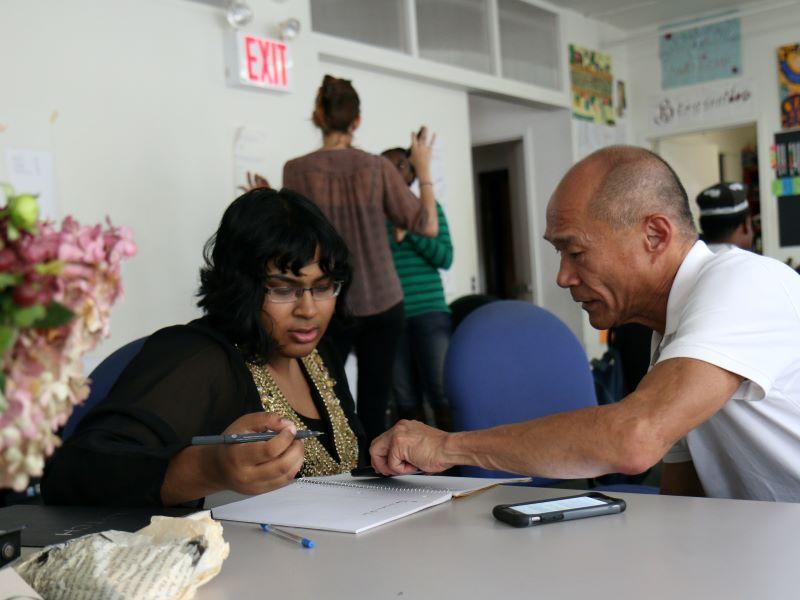
Challenges and opportunities of the 60-year curriculum
Lifelong learning for a post-digital-transformation, post-Covid world will need a degree of intention, design and flexibility universities do not yet offer, writes Jeff Grabill

You may also like
Popular resources
The idea that a university should be a lifelong learning resource is not particularly controversial. Many universities think they are. Regardless of their commitment to such an idea, the needs of learners, society and the larger economy have put welcome pressure on our ability to support lifelong learning.
The “60-year curriculum”, an idea developed by John Richards and Chris Dede at the Harvard Graduate School of Education, may be useful for unlocking our institutions’ potential. The reason for the 60-year time frame is to signal how we ought to think about the scope, within an individual life, for lifelong learning and to challenge universities to think more expansively about their design.
- Universities need to prepare for the mature student onslaught
- How to support women of all ages in post-secondary science education
- Lifelong learning needs a reboot – here’s how to do it
Richards and Dede argue in their book on this topic that a set of “disruptive shifts”, such as demographic changes in the population, the changing nature of work as a function of an increasingly digital economy and, of course, the dynamics of the Covid-19 pandemic “require a revolution in educational objectives”.
In some respects, the ideas encompassed in their work aren’t new. In the US context, at least, continuing education colleges and programmes have been around for a very long time. In land-grant institutions in the US, extension services have supported lifelong learning connected to community and work since their origin. In the UK context as well, lifelong learning as both voluntary and self-motivated, and also as organised and credentialled by higher education, has a long history. And we have on the horizon potentially transformative changes due to the lifelong learning entitlement.
Yet there is something more radical in the ideas of Richards and Dede that will challenge higher education institutions if taken seriously. To explore this requires us to understand the 60-year curriculum as a metaphor, something Richards and Dede also entertain. They write, for instance, that “the metaphor we propose for the 21st-century workplace of education is a ‘Global Network’, in which participants with multiple careers and many ‘gigs’ within each career reflect the shift from centralized to distributed organizations, from predefined to ad hoc work, and from a role-based to a consultant model of agency”.
Their metaphor is shaped by the changing nature of work, but it is focused on the changing nature of learning as well. At its heart, the metaphor challenges the purpose of higher education institutions.
For example, if individuals need to shift thoughtfully and purposefully through multiple stages of work and career, then responsive and useful higher education institutions must be able to support those shifts.
We can think about the challenge to higher education in terms of time, yet not simply in terms of 60 years. Right now, higher education institutions offer opportunities to learn that are punctuated, and the more traditional the institution, the more punctuated the offering. For example, serving 18- to 23-year-olds over a short period of time is one way to think about “punctuation”. Another is our often very short postgraduate experiences. These are three- or four-year curricula. Most students will only do a first degree at any given institution, although all will continue to learn and grow. Our design defaults are structured in terms of punctuated time frames. Do we give learners reasons to come back to us again and again? Can they see in us the possibility of a lifelong relationship?
We can think about time more deeply. The 60-year metaphor challenges us to consider how higher education institutions can be designed to provide periodic or even episodic learning experiences. Or, as Richards and Dede phrase the question: “How do we distribute and sustain the learning relationship between students and faculty and the higher education institution across a lifetime?” The 60-year curriculum is a radical idea because it presents a fundamental design challenge. To distribute and sustain learning relationships, we need to rethink our approach to curriculum, instruction, assessment – even how we qualify and admit students for study.
We would need to start thinking about an area of study as vertically integrated in a way that simply isn’t the case today. Currently, in more traditional contexts at least, we might think intentionally about the relationship between an undergraduate programme and graduate/postgraduate study at the master’s level. At this curricular boundary there might be some overlap and reuse.
To think more fundamentally about vertical integration, we would need to think about an area of study – computer science, let’s say – quite differently with regard to time. We might consider the design of the learning relationship as a periodic or even episodic area of study.
To do so, we should think about the learning experiences most optimal for those seeking an undergraduate degree, those seeking more advanced study and those seeking credentials or training for specific purposes not as serving completely different sets of learners or as discrete blocks sequenced in time but as a single area of study that can be repurposed and routinely redesigned.
We would ask questions about the ways these experiences are shared. We would wonder how thinking about the needs of a mid-career professional learner changes what we are offering to a learner initially exploring an area of study and field of practice. That is, we likely should offer new learners a different set of experiences if we were habitually attentive to what is emerging in professions and disciplines. The design questions are many when we think about learners and time in a more continuous way.
In designing from the perspective of 60 years, we also need to think again about the role of prior learning from education or work experience: what counts and how do the contextual issues around time, place, people and subject matter shape our decision-making? How do we value the prior learning that individuals may have done at other universities and from corporate providers of learning (such as Google or other non-university providers)?
Beyond our ability to honour prior learning and acknowledge credentials earned elsewhere within a flexible programmatic structure, designing with 60 years as our starting place means that online and hybrid are likely the necessary defaults.
To be sure, residential, on-campus experiences are highly transformative and will remain part of our offering at the University of Leeds. Yet they are limited in terms of who can be served. Currently, this is our design default, and that can’t be true if we take a 60-year view.
Key to my provocation is design. Higher education institutions need to be capable of designing intentional experiences for learners. This is a capability that is uncommon. If we change our defaults to “60 years”, we will need to be flexible and imaginative. We will need to design.
Jeff Grabill is deputy vice-chancellor for student education at the University of Leeds.
If you would like advice and insight from academics and university staff delivered direct to your inbox each week, sign up for the Campus newsletter.



Comments (0)
or in order to add a comment